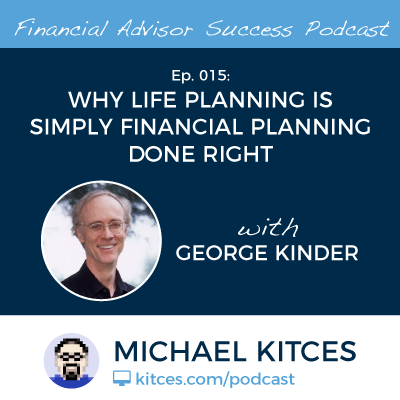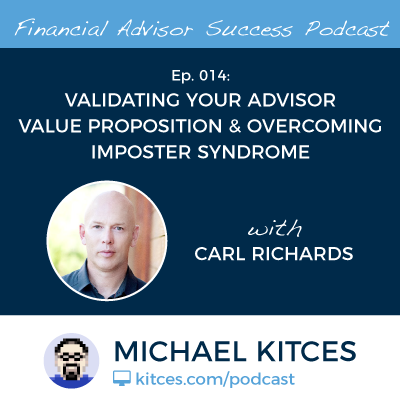This past Tuesday, April 10th, the Department of Labor's new fiduciary rule and its requirement for advisors to engage in a Best Interests Contract with their clients, didn't happen. And it didn't happen because last week the Department of Labor finalized a new regulation which enacted a 60-day delay to the applicability of the rule, which means the final DoL fiduciary rule is now scheduled to take effect June 9th, instead. Yet while many commentators have been suggesting that we'll see further delays until opponents of the DoL fiduciary rule ultimately kill it, I wouldn't be so sure of that, and particularly when you delve into the details of what this delay actually said.
In this week’s #OfficeHours with @MichaelKitces, my Tuesday 1PM EST broadcast via Periscope, we delve into the fine print details of the recent DoL fiduciary 60-day delay, why it was actually more like an 8-month delay for many key provisions, and why that actually reduces the likelihood of more DoL fiduciary delays!
First and foremost, the new regulation that enacted a 60-day delay (shifting the applicability date for the Department of Labor's fiduciary rule out until June 9th), was actually a 63-page regulation with a number of key changes, and even a few surprises. First, while the new definition of "fiduciary" is delayed until June 9th, the requirement to actually fully implement the Best Interests Contract Exemption (the crux of the new fiduciary rule) was delayed until the end of the year. Which means that the Impartial Conduct Standards (that advisors must give best interests advice, for reasonable compensation, and make no misleading statements) will go into effect on June 9th, but the remainder of the new disclosure rules, policies and procedures requirements, and enforcement mechanisms – such as the ability to bring a class action lawsuit against Financial Institutions for fiduciary breach – will not go into effect until 2018.
This delay is important to acknowledge because, contrary to much speculation, it ultimately reduces the likelihood of further delays! Segments of the industry have been fighting hard against DoL fiduciary – lobbying the DoL, suing the DoL for overreach and hastiness, lobbying Congressional Republicans to block it, and ultimately lobbying the current administration for a delay. But as I noted immediately following the election, the rule is still a done deal, finalized and formally adopted last year. Which is ultimately why President Trump didn't unwind the rule, but instead, only issued a proposal to consider whether to delay another 60 days. And based on the prior lawsuits over the "hastiness" of the rule (which was originally developed over five and a half years!), it's hard for opponents to now come back and say the rule should be killed or substantially changed in as little as 60 days! Especially when 90% of the 193,000(!) public comment letters received by the DoL were against even the 60-day delay! It's getting harder and harder to substantiate further delays to the rule now.
In fact, it seems that the only real path currently open for significant delay would be if a new regulatory impact analysis can shed new light on why the fiduciary rule would be somehow harmful after all, and undermine the prior cost/benefit analyses that have been conducted. Yet it's not clear how the industry would make that case, particularly given so many studies out there about the financial services industry's conflicts of interest, and how consumers are being harmed by those conflicts. And with the 45-day comment period to conduct a "Regulatory Impact Analysis" closing next week on April 17th, it's not clear how the DoL would possibly have enough time to substantively review the comments, propose a new rule, subject that rule to another comment period, take that feedback, complete a final rule, and submit that rule to the OMB for review and approval, and publish that new fiduciary rule in the Federal Register, all by June 9th.
In other words, the 60-day delay may have literally delayed the rule, but it's just not long enough of a delay to actually stop the rule. And when the industry's own lawsuits have claimed that the 5-and-a-half-year process of creating the rule was "too hasty", it's hard to make the case for substantively changing it in 60 days anyway. Even a re-delay will actually be challenging now, as with so many of the Best Interests Contract Exemption requirements pushed out to 2018, arguably the industry already has gotten an additional 8 months to adjust to the rule - which means advocates can emphasize that there's no reason to delay the applicability past June 9th anymore.
Notably, this doesn't mean that the rule won't be changed at all - modifications are still a definite maybe, perhaps around certain aspects of the policies and procedures requirements, disclosure obligations, or even the class action lawsuit provision. But the bottom line is that for all of the talk about the DoL fiduciary rule dying or going away, it really doesn't appear to be happening. So, if you haven't finished your preparations for the DoL fiduciary rule, I'd really encourage you to start doing so now!

 Welcome back to the fifteenth episode of the Financial Advisor Success podcast!
Welcome back to the fifteenth episode of the Financial Advisor Success podcast! Welcome back for the fourteenth episode of the Financial Advisor Success podcast!
Welcome back for the fourteenth episode of the Financial Advisor Success podcast! We wrap up with the sad news that this week, financial planning visionary Dick Wagner passed away unexpectedly. Wagner has long been recognized as a thought leader in the profession (since long before the term was popular), and was both a former practitioner, former volunteer leader at the chapter and national level in various FPA-predecessor organizations, co-founder of the Nazrudin Project (from which much of the life planning movement emerged), and a tireless advocate of advancing financial planning into a true profession around a broader garden of knowledge that he dubbed the study of "finology". Fortunately, Wagner was able to publish his book, "Financial Planning 3.0", just a few months before he passed away, and in today's weekend reading, we highlight what many view as the seminal article on how financial planners must evolve to truly become a recognized profession... an article he first published in the Journal of Financial Planning in 1990, that we are all collectively still trying to live up to today. Rest in peace, Dick Wagner.
We wrap up with the sad news that this week, financial planning visionary Dick Wagner passed away unexpectedly. Wagner has long been recognized as a thought leader in the profession (since long before the term was popular), and was both a former practitioner, former volunteer leader at the chapter and national level in various FPA-predecessor organizations, co-founder of the Nazrudin Project (from which much of the life planning movement emerged), and a tireless advocate of advancing financial planning into a true profession around a broader garden of knowledge that he dubbed the study of "finology". Fortunately, Wagner was able to publish his book, "Financial Planning 3.0", just a few months before he passed away, and in today's weekend reading, we highlight what many view as the seminal article on how financial planners must evolve to truly become a recognized profession... an article he first published in the Journal of Financial Planning in 1990, that we are all collectively still trying to live up to today. Rest in peace, Dick Wagner.
